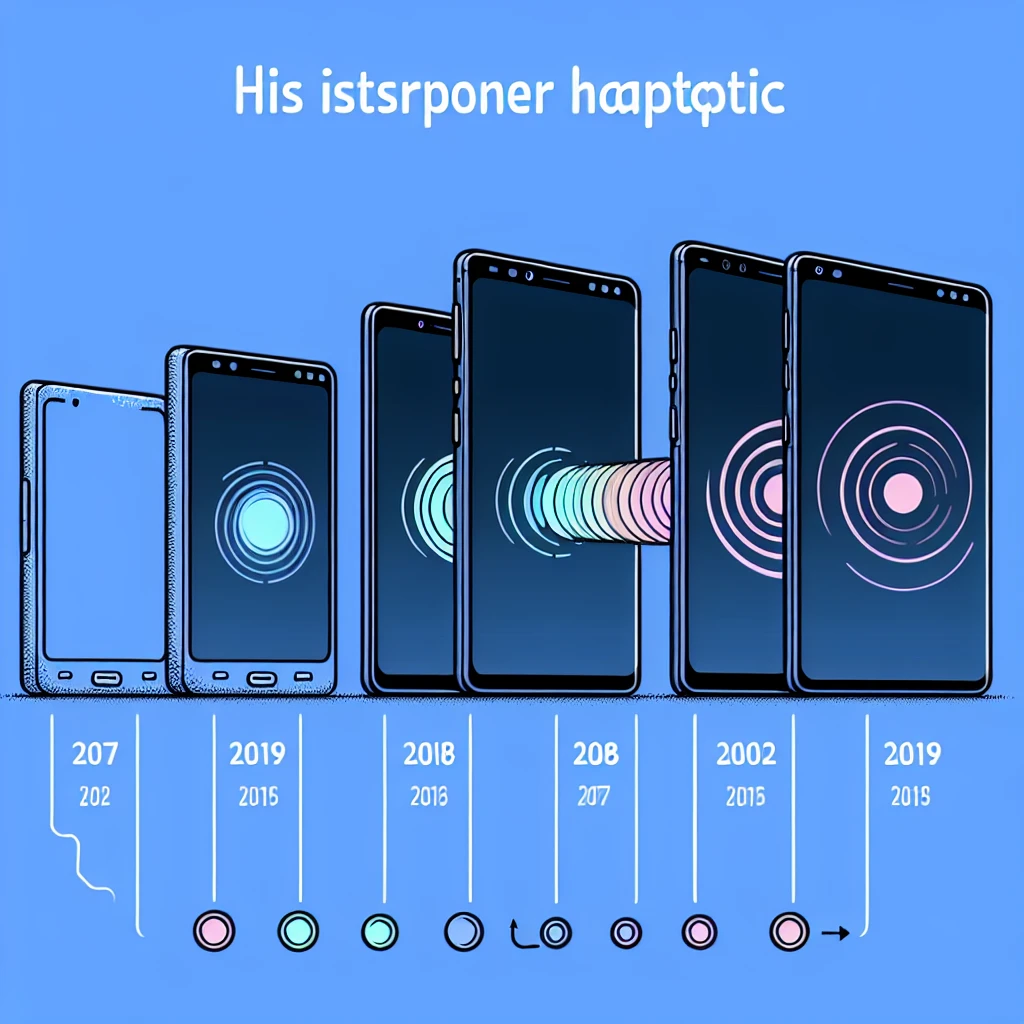The Evolution of Smartphone Haptics: How Subtle Vibrations Enhance UX
The world of technology is continuously evolving, and smartphones have become an integral part of our daily lives. One of the most intriguing advancements in smartphone technology is the evolution of haptics. Haptic technology uses tactile feedback to create a sensory experience through vibrations, enhancing user experience (UX) across various applications. In this article, we will explore the history of smartphone haptics, how subtle vibrations improve UX, and what the future holds for this innovative technology.
A Brief History of Haptic Technology
The roots of haptic technology can be traced back to the early days of computer interfaces. The invention of haptic feedback dates to the 1960s when researchers began to experiment with tactile sensations in teleoperation and robotics. However, it wasn’t until the 1990s that haptic technology gained traction in consumer electronics, particularly in gaming devices. The introduction of vibration feedback in gaming controllers marked the beginning of a new era, allowing users to feel the action in a more immersive way.
With the advent of smartphones in the early 2000s, manufacturers quickly recognized the potential of haptic feedback to improve user experience. The first smartphones incorporated simple vibration motors that provided basic feedback, but as technology progressed, so did the sophistication of haptic systems.
The Role of Haptic Feedback in Enhancing UX
Haptic feedback serves multiple purposes in enhancing user experience. Here are a few key ways in which subtle vibrations improve interaction with smartphones:
- Touch Confirmation: When users interact with their devices, haptic feedback provides confirmation of their actions. For instance, when typing on a virtual keyboard, a light vibration can signal that a key has been pressed, enhancing the tactile experience.
- Notifications and Alerts: Subtle vibrations can effectively alert users to incoming messages, calls, or notifications without disrupting their environment. This discreet form of feedback allows users to stay connected while maintaining focus.
- Enhanced Gaming Experience: Haptic feedback transforms gaming by allowing players to feel the impact of actions within the game. For instance, a racing game might simulate the feeling of tire traction or collisions through vibrations, creating a more immersive experience.
- Accessibility Features: Haptic feedback is also vital for users with visual impairments. By providing tactile cues, smartphones can make navigation and interaction more accessible.
- Realistic Interaction: The integration of haptic technology creates a sense of realism when interacting with virtual objects. For example, when using augmented reality applications, vibrations can simulate the sensation of touching surfaces or objects.
Current State of Haptic Technology
Today, most modern smartphones are equipped with advanced haptic systems that offer a range of feedback options. The introduction of linear resonant actuators (LRAs) and eccentric rotating mass (ERM) motors has revolutionized haptic feedback, allowing for more precise and varied sensations. Manufacturers are now able to fine-tune the strength, duration, and frequency of vibrations to create a tailored user experience.
One notable example is Apple’s Taptic Engine, which provides highly responsive haptic feedback across its devices. This technology allows for nuanced vibrations, enhancing the feeling of interactions and making the user experience more satisfying. Similarly, Android devices have adopted advanced haptic feedback systems, enabling developers to create customized vibrations for different applications.
Pros and Cons of Haptic Feedback
While haptic feedback offers numerous benefits, it also has some drawbacks. Here are the pros and cons of this technology:
Pros:
- Enhanced User Engagement: Haptic feedback makes interactions more engaging and enjoyable, encouraging users to explore their devices.
- Improved Accessibility: Subtle vibrations can assist those with disabilities, making smartphones more inclusive.
- Increased User Satisfaction: Well-designed haptic feedback can lead to higher user satisfaction, as it provides a sense of connection with the device.
Cons:
- Battery Drain: Advanced haptic systems may consume more battery, potentially impacting device longevity.
- Overuse: Excessive or poorly designed haptic feedback can become annoying to users, detracting from the overall experience.
- Development Costs: Integrating high-quality haptic feedback requires investment in technology and software development for app creators.
Looking Ahead: The Future of Haptics
The future of smartphone haptics holds exciting possibilities. As technology continues to advance, we can expect to see even more sophisticated haptic feedback systems that provide users with richer and more immersive experiences. Potential developments include:
- Adaptive Haptics: Future smartphones may utilize AI to adapt haptic feedback based on user behavior and preferences, creating a more personalized experience.
- Expanded Application in Virtual Reality: Haptic feedback will play a crucial role in enhancing VR experiences, allowing users to feel physical sensations in virtual environments.
- Integration with Wearable Technology: As wearables become more prevalent, haptic feedback may be utilized in smartwatches and fitness trackers to provide real-time feedback during activities.
- Increased Realism in Gaming: The gaming industry will likely push the boundaries of haptic technology, creating unparalleled immersive experiences.
Conclusion
In conclusion, the evolution of smartphone haptics has significantly transformed the way we interact with our devices. From simple vibrations to sophisticated feedback systems, haptic technology has enhanced user experience across various applications. As we look to the future, the possibilities for haptic feedback are limitless, promising to create even more engaging and immersive experiences for users. As smartphones continue to evolve, so too will the role of haptic technology, shaping the future of user interaction in ways we can only begin to imagine.

